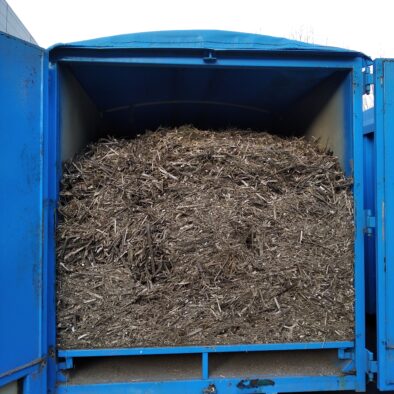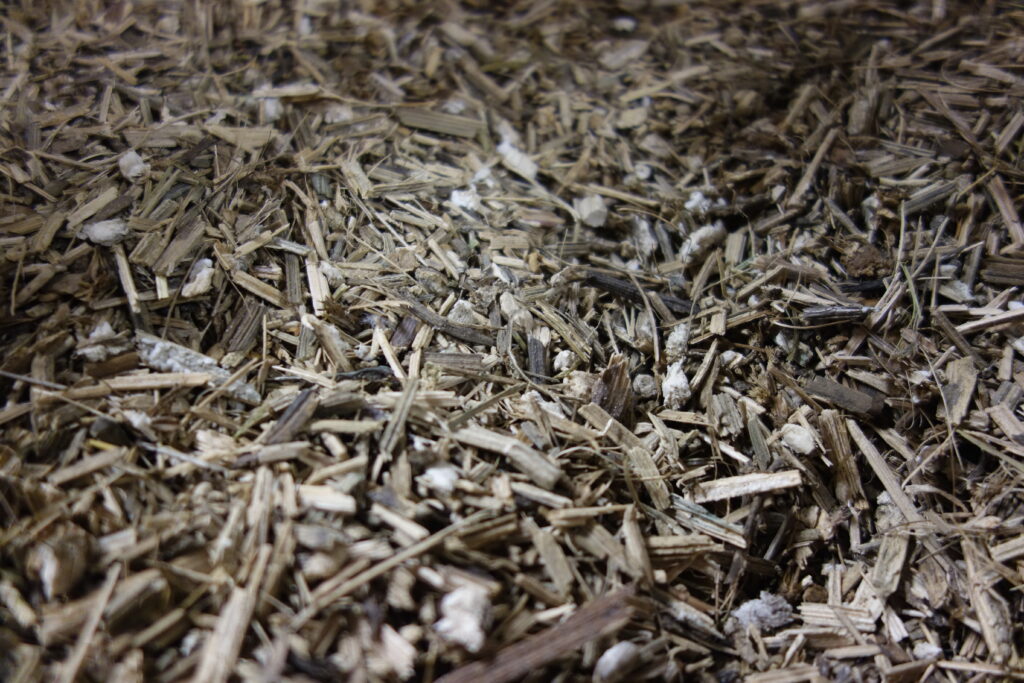
The FCAC collected a total of 5 tonnes of sunflower stalks and 2 tonnes of corn stalks in Catalonia. They were then transported by truck to Tarbes, where their division was optimized. The developed process comprises several successive stages: crushing of the stems by means of a hammer mill, dusting, thread removal and separation of the agrogranulates from the peel and the pith (by sifting, aspiration and then purification).
On the one hand, the grinding allows to reduce the size of the solid particles and, at the same time, to detach the pith particles from the peel. On the other hand, the separation of the pith and the peel is possible thanks to the important difference of apparent density between these two types of particles: 20 kg/m3 and 100 kg/m3, respectively. The sifting process removes dust from the ground stems, while the suction process isolates the lighter pith particles. However, debugging on a sloping tape is required to remove the smallest pieces of peel from the pith. Complementary stages of thread removal and sifting were also carried out to obtain vegetal aggregates compatible with a use in construction.
Next, the pith and peel agrogranulates were characterized from a physicochemical point of view, both in the French part (INPT and UPS) and in the Spanish part (UPC). They were also made available to action no. 4, the aim of which is to develop and characterize a constructive solution based on sunflower and corn stems, combining a light concrete of vegetal origin (which includes particles of sunflower or corn peel) and a semi-rigid lightweight insulating panel (formulated from sunflower or corn pith aggregates).
A second harvest of sunflower and corn stalks is currently being carried out, also in Castelló d’Empúries. This 2021 harvest aims to collect these two biomasses in sufficient quantities for the needs of Action 5, which will design and build two prototypes of instrumented cells at the end of the second year of the project. The needs of sunflower and corn have been estimated at 9 and 3 tons, respectively. In order to improve efficiency and reduce the environmental impact of the harvest, this year it will be carried out with a forage harvester, once the grain has been harvested. Harvesting will be carried out on dry stalks (with a maximum moisture content of 10%) and the fineness of the crushing in the mincer will be set at 3 mm. In this way, it is guaranteed that the harvested material already has the right size of grain. Therefore, the process of treatment of the stems that will be carried out in the INP will be simplified. In effect, these are only the following three stages: dust removal, thread removal and separation of the agrogranulates of peel and pith (by sieving, aspiration and then purification).





